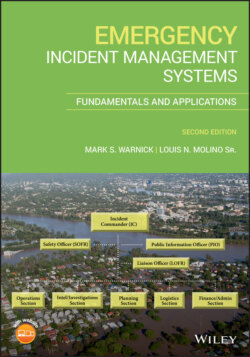Читать книгу Emergency Incident Management Systems - Mark Warnick S., Louis N. Molino Sr - Страница 33
1.5 California's Solution
ОглавлениеDuring the 1960s and 1970s, California was a state that regularly required multiagency responses, and these responses were (usually) substantially larger in scope than anywhere else in the United States. With large areas of underbrush, towering trees, vegetation covered hills, and dry winds, the fire load in the wildland areas of California was exorbitant. Following the wildfires, there were often torrential rains that often‐caused mudslides on the bare hillsides that was stripped of vegetation by a fire. Beyond the major disaster of wildland fires, California would suffer the occasional earthquake and other disasters that affected that geographical region.
Whenever a major incident occurred, a multiagency response was needed. In these multiagency responses, many were seeing the same complications that seemed to plague other multiagency responses. The State of California began to investigate how to mitigate the negative effects of multiagency responses by promoting the positives and mitigating the negatives. California's answer to these, and other problems, was an experimental project named “Firefighting Resources of California Organized for Potential Emergencies.” The project used the acronym FIRESCOPE.
The FIRESCOPE project began designing a basic standard for all personnel and response agencies. The idea was to help lessen the problems that were ongoing and apparent whenever it was required to manage these major emergency incidents. Those working on the FIRESCOPE project felt they had to come up with a way to better organize response efforts. Recommendations were made that addressed each issue individually. They then combined the mitigation measures for each individual problem and created an all‐encompassing system that addressed all these issues.
After working out all the issues, and coming up with a basic design, they committed to undertaking a comprehensive field test of this new management system. When most people think of a field test, they often imagine a one‐time test on a single day, but this was not the case with FIRESCOPE. The FIRESCOPE field test lasted multiple years. Each time a problem was identified, adjustments were made to the overall system so that it could become finely honed. This extensive field testing of the FIRESCOPE management system led to an extremely robust method of managing emergencies.
FIRESCOPE was the initial concept that, over a period of time, developed into the common procedure that we now know as Incident Command System (ICS). The information provided in this book is essentially just the tip of the iceberg, and those studying incident management would be wise to further their knowledge about FIRESCOPE. For a more complete historical review of FIRESCOPE and the transformation into ICS, you can visit www.firescope.org.
